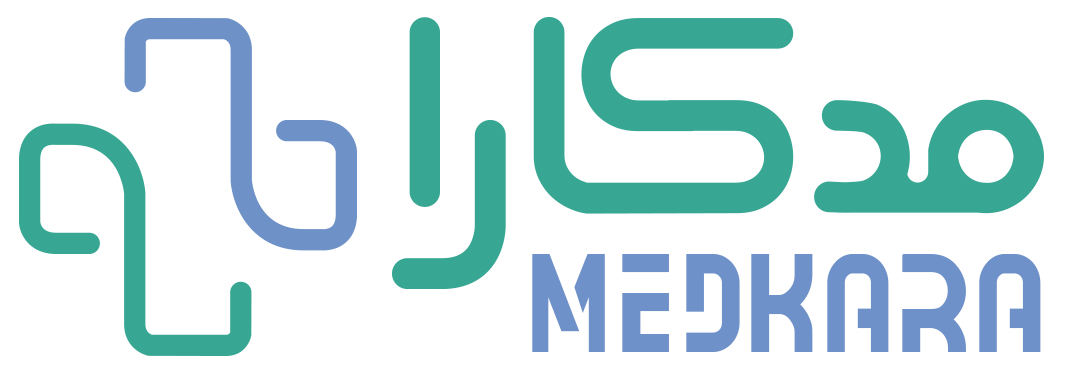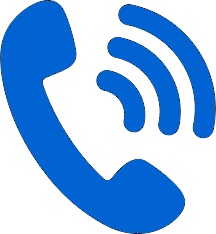۱. ارزیابی اولیه: هرپس فعال در برابر هرپس غیرفعال
هرپس غیرفعال (Healing / Crusted)
- معمولاً هیچ منع خاصی برای بیهوشی ندارد.
- ابزارگذاری راههوایی باعث گسترش ضایعه نمیشود.
- LMA و لوله تراشه هر دو قابل استفادهاند.
- اگر ضایعه خشک شده باشد، ریسک پارگی و خونریزی بسیار پایین است.
هرپس فعال (Active Vesicles / Ulcerated Lesions)
- خطرات اصلی:
- پارگی ضایعه هنگام دستکاری دهان
- انتقال ویروس از طریق تماس (Herpetic Whitlow در پرسنل)
- گسترش عفونت در بیماران دارای نقص ایمنی
- باید شدت ضایعه بررسی شود:
- ضایعه محدود و غیرترشحدار → LMA معمولاً قابل قبول است
- ضایعه وسیع، چرکی یا دردناک → تعویق عمل یا انتخاب لوله تراشه
۲. ارزیابی ریسک تروما و انتخاب وسیلهٔ Airway
LMA (Laryngeal Mask Airway)
- تهاجم کمتر
- تماس کمتر با تارهای صوتی و تراشه
- مناسبتر در ضایعات سطحی لب (کمتر باعث سایش مستقیم میشود)
ETT (Endotracheal Tube – لوله تراشه)
- تهاجمیتر
- احتمال سایش بیشتر به مخاط
- مناسب بیماران با نیاز به تهویه کنترلشده یا خطر آسپیراسیون بالا
۳. وضعیت ایمنی بیمار (Immunocompetent / Immunocompromised)
بیمار سالم (Immunocompetent)
- تبخال فعال منع مطلق برای بیهوشی نیست.
- LMA اغلب انتخاب اول است.
- در عملهای الکتیو بهتر است تا بهبود ضایعه صبر شود.
بیمار دارای نقص ایمنی (Immunocompromised)
مانند:
- شیمیدرمانی
- HIV کنترلنشده
- پیوند عضو
- مصرف طولانی استروئید
در این موارد:
- خطر گسترش عفونت بیشتر است.
- توصیه:
- عمل انتخابی تعویق
- شروع درمان ضدویروسی
- اگر عمل ضروری است: ETT ترجیح دارد و LMA توصیه نمیشود.
۴. توصیه برای اعمال الکتیو در مقابل اورژانسی
اعمال الکتیو
- در هرپس فعال:
- بهتر است تا فروکش ضایعه صبر شود
- در هرپس غیرفعال:
- انجام عمل با LMA یا ETT بدون مشکل
اعمال اورژانسی
- در هرپس فعال و بیمار سالم:
- استفاده از LMA لارنژیال ماسک با تکنیک ملایم ممکن است
- در نقص ایمنی یا ضایعه شدید:
- استفاده از ETT، همراه با پوشش دارویی ضدویروس
۵. نکات اختصاصی کودکان
- در کودکان سالم، تبخال لب منع استفاده از LMA محسوب نمیشود.
- دستکاری ملایم (Gentle insertion) اهمیت بیشتری دارد.
- اگر ضایعه فعال و دردناک باشد، خطر پارگی ضایعه بیشتر است.
- در کودکان دارای نقص ایمنی:
- تعویق عمل
- یا استفاده از ETT با بیهوشی عمیق و حداقل تروما
۶. الگوریتم انتخاب LMA یا ETT در هرپس فعال
LMA قابل استفاده است اگر:
- بیمار سالم است
- ضایعه محدود و خشک است
- ترشح زیاد ندارد
- عمل کوتاه یا با ریسک آسپیراسیون پایین است
- اورژانسی است و نمیتوان عمل را به تأخیر انداخت
ETT ترجیح دارد اگر:
- بیمار نقص ایمنی دارد
- ضایعه فعال، ترشحدار، یا بسیار دردناک است
- نیاز به تهویه طولانی / کنترلشده وجود دارد
- جراحی شکمی یا جراحی با ریسک آسپیراسیون بالا انجام میشود
۷. نکات ایمنی کادر درمان
- استفاده از دستکش بدون پودر
- جلوگیری از تماس مستقیم با ضایعه
- احتمال ایجاد Herpetic Whitlow در کارکنان
- ضدعفونی کامل وسایل دهانی و سطوح کاری پس از عمل
جمعبندی نهایی
- تبخال لب غیرفعال:
- بیهوشی بدون محدودیت خاص
- تبخال فعال در بیمار سالم:
- LMA معمولاً قابل استفاده است (بهویژه در عملهای اورژانسی)
- در اعمال الکتیو بهتر است بهبود ضایعه صبر شود
- تبخال فعال در بیمار دارای نقص ایمنی:
- تعویق عمل + درمان ضدویروسی
- اگر جراحی ضروری است: برتری با لوله تراشه
- برگرفته از :
- 📚 Books (کتابها)
- Gropper MA, editor. Miller’s Anesthesia. 10th ed. Philadelphia: Elsevier; 2024. Elsevier Health+1
- Cullen BF, Stock MC, Ortega R, Sharar SM, Holt NF, Connor CW, Nathan N, editors. Barash, Cullen, and Stoelting’s Clinical Anesthesia. 9th ed. Philadelphia: Lippincott Williams & Wilkins (LWW); 2023. Amazon+1
- Coté CJ, Lerman J, Anderson BJ, editors. A Practice of Anesthesia for Infants and Children. 7th ed. Elsevier; 2024. Elsevier Shop+1
- Davis PJ, Cladis FP, editors. Smith’s Anesthesia for Infants and Children. 9th ed. St. Louis (MO): Elsevier; 2017. ScienceDirect+1
- (Book chapter / online monograph)
Anesthesia for Pediatric Dentistry. In: Pediatric dental / anesthesia reference (online). ClinicalGate; 2015. Accessed 2025. Clinical Gate
- 📄 Journal Articles (مقالات ژورنالی و مرورها)
- DeYoung GG, Harrison AW, Shapley JM. Herpes simplex cross infection in the operating room. Can Anaesth Soc J. 1968;15(4):394–396. doi:10.1007/BF03006965 PubMed+1
- Orkin FK. Herpetic whitlow—occupational hazard to the anesthesiologist. Anesthesiology. 1970;33(6):671–673. ScienceDirect+1
- Greaves WL, Kaiser AB, Alford RH, Schaffner W. The problem of herpetic whitlow among hospital personnel. Infect Control. 1980;1:318–323. Cambridge University Press & Assessment+1
- Schlech WF. The risk of infection in anaesthetic practice. Can J Anaesth. 1988;35(2):148–158. (شامل بحثی در مورد herpetic whitlow و مخاطرات شغلی برای بیهوشی). SpringerLink
- DeYoung GG, Harrison AW, Shapley JM. (re-cited in: Infectious Disease Considerations for the Operating Room). In: Infectious disease considerations for the operating room. Clin Anesth reference chapter online؛ استناد ثانویه به گزارش هرپس ساده در اتاق عمل. ScienceDirect+1
- Gill MJ. Herpes simplex virus infection of the hand. Am J Med. 1988;85(2):201-208. (مقاله مروری که به کار Orkin دربارهٔ herpetic whitlow بهعنوان خطر شغلی بیهوشی اشاره میکند). American Journal of Medicine+1
- Hambrick GW. Herpetic whitlow: a medical risk. Arch Dermatol. 1971;103(6):640-645. (مرور کلاسیک دربارهٔ پاتوژنز و پیشگیری از herpetic whitlow، استنادشده در مقالات بیهوشی). PMC
- English Summary: Herpes Labialis and General Anesthesia (LMA vs ETT)
- Herpes Labialis in General Anesthesia: A Comprehensive Guide to Choosing LMA or Endotracheal Tube
Herpes labialis, caused by Herpes Simplex Virus type 1 (HSV-1), is one of the most common viral lesions of the oral mucosa. During general anesthesia, these lesions may pose challenges because any form of airway instrumentation can potentially trigger irritation, bleeding, ulcer rupture, or viral transmission to healthcare providers.
According to major anesthesia references, the presence of herpes labialis—whether active or healing—is not considered an absolute contraindication to general anesthesia in otherwise healthy individuals. However, the decision to use an LMA or an endotracheal tube must be individualized based on: - the activity and severity of the lesion,
- the immune status of the patient, and
- whether the surgery is elective or urgent.
- 1. Initial Assessment: Active vs. Non-Active Herpes Labialis
Healing / Crusted Herpes (Non-Active) - Generally poses no significant restriction for general anesthesia.
- Airway manipulation does not increase lesion spread.
- Both LMA and endotracheal tube (ETT) are acceptable options.
- Once the lesion is dry or crusted, the risk of rupture or bleeding is very low.
- Active Herpes (Vesicles or Ulcerated Lesions)
Primary risks include: - Rupture of the lesion during mouth manipulation
- Transmission of HSV to staff (herpetic whitlow)
- Potential for viral dissemination in immunocompromised patients
- Severity scoring is essential:
- Limited, dry, non-exudative lesions → LMA is usually acceptable
- Extensive, painful, purulent, or heavily exudative lesions → Delay surgery or choose ETT
- 2. Trauma Considerations and Airway Device Selection
LMA (Laryngeal Mask Airway) - Less invasive instrumentation
- Minimal contact with vocal cords and trachea
- Often preferred when lip lesions are superficial
- Reduces the likelihood of direct pressure on the lesion
- ETT (Endotracheal Tube)
- More invasive approach
- Higher chance of mucosal contact and irritation
- Necessary when controlled ventilation is required or aspiration risk is high
- Preferred for longer surgeries or conditions requiring deep anesthesia
- 3. Immune Status: Immunocompetent vs. Immunocompromised Patients
Immunocompetent Patients - Active herpes is not an absolute contraindication.
- LMA is often considered the first-line choice.
- For elective procedures, postponing until partial healing is beneficial but not mandatory.
- Immunocompromised Patients
Including: - Chemotherapy recipients
- Uncontrolled HIV infection
- Organ transplant patients
- Long-term steroid therapy
- In these patients:
- Risk of viral spread is significantly higher.
- Elective surgeries should be postponed.
- Start antiviral therapy when appropriate.
- If surgery is essential:
→ ETT is preferred, and LMA is generally avoided.
- 4. Elective vs. Emergency Procedures
Elective Surgery - Active herpes:
→ Best practice is to delay surgery until the lesion has subsided. - Non-active herpes:
→ LMA or ETT may be used without restriction.
- Active herpes:
- Emergency Surgery
- Active herpes in healthy patients:
→ LMA is acceptable with gentle technique. - Immunocompromised patients or severe lesions:
→ Prefer ETT with appropriate antiviral coverage.
- Active herpes in healthy patients:
- 5. Key Considerations in Pediatric Patients
- In immunocompetent children, herpes labialis does not contraindicate LMA use.
- Gentle insertion is crucial to avoid lesion trauma.
- Active and painful lesions carry a higher risk of rupture.
- Immunocompromised children require:
- Delay in elective procedures
- Or use of ETT with deep anesthesia and minimal mucosal trauma
- 6. Practical Algorithm for Choosing LMA vs. ETT in Active Herpes
Choose LMA if: - Patient is immunocompetent
- Lesion is limited, dry, or non-exudative
- Minimal secretion
- Procedure is short or low-risk for aspiration
- Surgery cannot be postponed (urgent)
- Choose ETT if:
- Patient is immunocompromised
- Lesion is active, exudative, or significantly painful
- Controlled or prolonged ventilation is needed
- Abdominal or high-aspiration-risk surgery
- Severe facial/oral involvement is present
- 7. Safety Considerations for Healthcare Providers
- Use powder-free gloves
- Avoid direct contact with the lesion
- Be aware of the risk of herpetic whitlow in staff
- Ensure thorough disinfection of airway equipment
- Maintain standard droplet and contact precautions
- 8. Final Summary
Non-Active Herpes Labialis
→ No significant limitations for anesthesia
→ LMA or ETT can be used safely
Active Herpes in Immunocompetent Patients
→ LMA usually acceptable, especially in urgent procedures
→ For elective cases, delaying surgery is preferable
Active Herpes in Immunocompromised Patients
→ Delay surgery + initiate antiviral therapy
→ If surgery is essential: ETT is the preferred airway device




دیدگاه خود را بنویسید